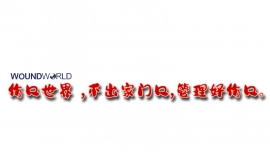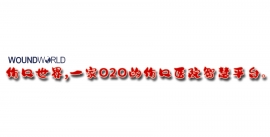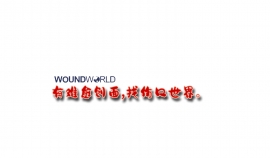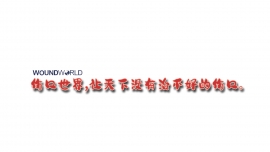文献精选
Matthew J Young, Christopher D Jones and Josh Jones
Citation: Young MJ, Jones CD, Jones J (2024) C-reactive protein and the outcomes of diabetes foot ulcer infection. The Diabetic Foot Journal 27(1): 40–3
Key words
- C-reactive protein
- Diabetes foot ulcer infection
- Risk assessment
Article points
1. Retrospective audit to determine if C-reactive protein can be used to establish the optimum point for discharge of patients admitted with diabetes foot infections.
2. Lower discharge CRP values are associated with a lower risk of subsequent adverse events: readmission, amputation or death
3. This needs to be balanced with the detrimental effects of extended hospital admission and excessive antibiotic use.
Authors
Matthew J Young, Christopher D. Jones and Josh Jones; all at Diabetes Foot Clinic, Royal Infirmary, Edinburgh, Scotland, UK
Aims: To determine if C-reactive protein (CRP) can be used to establish the optimum point for discharge of patients admitted with diabetes foot infections. Materials and methods: A retrospective audit of 198 admissions of 105 people with diabetes admitted to and discharged from one hospital from September 2019 to December 2021 with CRP measurements and follow up for 12 weeks. Patients were assessed to determine if they had an adverse outcome: readmission, amputation or death. These outcomes were grouped according to discharge CRP from 5 to 25mg/l. After publicising the findings of the first audit, a second cohort of 58 admissions in 30 patients was used to determine if outcomes could be improved. Results: In cohort one, a total of 56 people were admitted once only and 49 more than once. The median admission CRP was 83 (IQ range 27–196mg/l) and the median discharge CRP was 15 (IQ range 7–38mg/l). Any discharge CRP over 5mg/l was associated with an increased risk of adverse outcome, OR 4.3 (95%CI 1.2–1.9) to 6.6 (CI3.5–6.6) all p=.01, however, patients who were discharged with a CRP of >10mg/l were significantly more likely to be have an adverse outcome, OR 14.4 (CI 6.6–31.4, p<.0001). In cohort two, 18 people were admitted once only and 12 were admitted more than once. The median admission CRP was 99mg/l and on discharge 6mg/l. Using a discharge CRP value of 11 or above mg/l as a cut-off resulted in an odds ratio of 17.9 (95% CI: 4.1–78.0, p=0.0001) for an adverse outcome, readmission or amputatoon. Conclusion: Lower discharge CRP values are associated with a lower risk of subsequent adverse events. However, this needs to be balanced with the detrimental effects of extended hospital admission and excessive antibiotic use. A discharge CRP of <=10mg/l may be a pragmatic balance.
Bulent M Ertugrul, Saime Irkoren, Ender Ceylan and Oner Savk
Citation: Ertugrul BM, Irkoren S, Ceylan E, Savk O (2024) Split thickness skin graft and intralesional epidermal growth factor for patients with diabetic foot wounds. The Diabetic Foot Journal 27(1): 34–9
Key words
- Diabetic foot
- Epidermal growth factor
- Skin graft
- Wound treatment
Article points
1. Healthy granulation tissue is essential to the success of split-thickness skin grafting
2. Epidermal growth factor (EGF) has a critical role in the angiogenesis and formation of healthy granulation tissue
3. Patients with diabetic foot ulcers treated with EGF had a higher rate of graft survival.
Authors
Bulent M Ertugrul MD is Professor of Infectious Diseases and Clinical Microbiology, University of Adnan Menderes School of Medicine, Aydin, Turkey; Saime Irkoren MD is Associate Professor of Plastic, Reconstructive and Esthetic Surgery, University of Adnan Menderes School of Medicine, Aydin, Turkey; Ender Ceylan MD is Assistant Professor of Plastic, Reconstructive and Esthetic Surgery, University of Adnan Menderes School of Medicine, Aydin, Turkey; Oner Savk MD is Professor of Orthopedics and Traumatology, University of Adnan Menderes School of Medicine, Aydin, Turkey
Split thickness skin grafting (STSG) is a simple surgical technique in wound reconstruction, but various factors including inadequate wound bed preparation may cause partial or total graft loss. Ensuring infection-free healthy granulation tissue is essential before operation. Epidermal growth factor (EGF) has a critical role in angiogenesis and formation of healthy granulation tissue. This study retrospectively investigated the value of intralesional EGF in patients with a chronic foot ulcer due to diabetes who underwent reconstruction with an autologous skin graft. Patients treated with intralesional EGF had a higher rate of graft survival, significantly fewer postoperative complications and reduced hospitalisation times. These results suggest we should undertake a need prospective study of this issue with a larger case series.
Michelle Clapham
Despite recent Government initiatives to reduce rates, the prevalence of type 2 diabetes is expected to continue rising to almost 10% of the population by 2035. Complications of type 2 diabetes, such as cardiovascular disease (CVD), contribute to approximately 22 000 deaths annually in England, indicating a need for population health management through preventative healthcare. The Making Every Contact Count (MECC) initiative recommends the building of preventative strategies into routine primary care appointments to reduce modifiable risk factors associated with both type 2 diabetes and CVD. This article explores the unique opportunities general practice nurses have to promote primary and secondary prevention of CVD.
Citation: Clapham M (2024) Challenges and opportunities in reducing risk of diabetes-related cardiovascular disease: Making Every Contact Count . Diabetes & Primary Care 26: [Early view publication]
Key words
– Cardiovascular disease
– Making Every Contact Count
– Service delivery
– Type 2 diabetes prevention
Author
Michelle Clapham, Lecturer in Adult Nursing, University of Plymouth.
James Morris, David Morris
Latent autoimmune diabetes in adults (LADA) is a slowly progressing form of autoimmune diabetes with antibodies directed against the pancreatic beta-cells. It typically presents in people over the age of 30 years and has a clinical and biochemical picture intermediate between type 1 and type 2 diabetes. Because there is no immediate requirement for insulin, it is often initially misdiagnosed as type 2 diabetes. This case report of a younger adult with an uncertain diagnosis of type 2 diabetes illustrates the characteristics and clinical implications of LADA, its differential diagnosis and its possible management strategies.
Authors
James Morris, GPST3, Priory
View Medical Centre, Leeds, and GPST Visiting Lecturer, University of Leeds; David Morris, Retired GP and Specialist Doctor in Diabetes, Undergraduate Clinical Tutor, Keele University.
Citation: Morris J, Morris D (2024) Case report: LADA – assessing diabetes in a non-overweight younger person. Diabetes & Primary Care 26: [Early view publication]
Case presentation
Susan, a 39-year-old lady with a two-year history of type 2 diabetes, attended general practice reporting symptoms of thirst, increased micturition, lethargy and abdominal discomfort. She reported a weight loss of 2 kg over the last year.
Initial management of Susan’s diabetes had focused on lifestyle adjustment and treatment with metformin, which had been titrated up to a dose of 1000 mg twice daily. While this strategy initially improved glycaemic control, Susan’s HbA1c levels continued to fluctuate, running as high as 75 mmol/mol, despite careful diet, regular exercise and taking her medication as prescribed. As a result, sitagliptin (subsequently stopped because of pruritus) and more recently empagliflozin were added to Susan’s regimen.
Susan, a car driver, had declined gliclazide, wishing to avoid the risk of hypoglycaemia. Susan was up to date with her diabetes foot checks and retinal screening, and there were no diabetes complications.
Latest results (2 months previously):
HbA1c 63 mmol/mol (7.9%); total cholesterol 4.7 mmol/L; non-HDL cholesterol 3.8 mmol/L; Hb 135 g/L; eGFR >90 mL/min/1.73 m2 ; urinary ACR <3 mg/mmol.
Past medical history: Gestational diabetes.
Medication: Metformin 1000 mg twice daily; empagliflozin 25 mg once daily.
Social history: Secretary; ex-smoker; alcohol only
Family history: Mother and first cousin with type 1 diabetes.
Examination: BMI 24.1 kg/m2 ; blood pressure 125/72 mmHg. Cardiovascular and respiratory systems unremarkable. Abdomen: no significant
Investigations: Dipstick urine: glucose +++, nil else. Fingerprick glucose: 12.3 mmol/L. Blood ketones: not significant.
What is your clinical assessment of the situation?
What further investigations would you consider?




